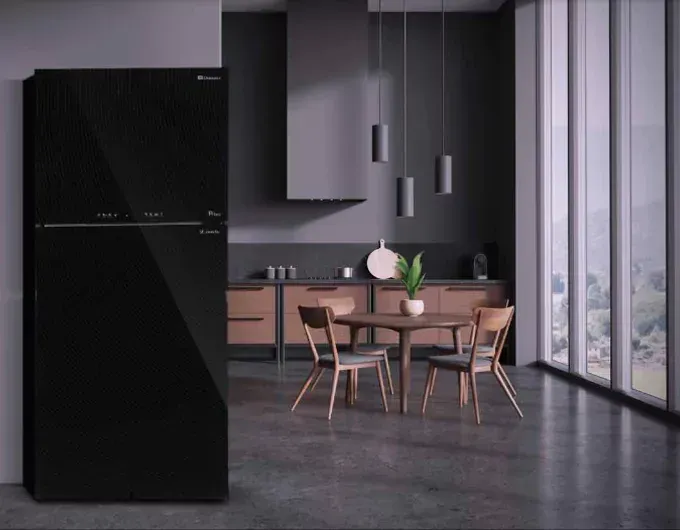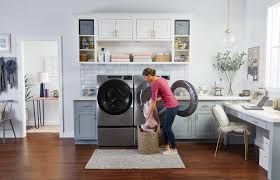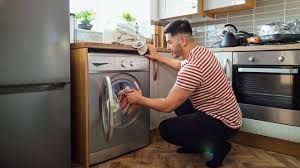Why is My Refrigerator Leaking?
Refrigerators are essential appliances in modern kitchens, keeping our food fresh and safe for consumption. However, like all machines, they can develop issues over time. One common problem that many homeowners face is a leaking refrigerator. A leak can cause not only inconvenience but also damage to your floors and lead to potential health hazards due to mold growth. In this article, we will explore the most common reasons why your refrigerator might be leaking and provide solutions to address these issues.
Blocked Defrost Drain
The defrost drain is a small tube located at the bottom of your refrigerator's freezer compartment. Its primary function is to channel the water produced during the defrost cycle to a drain pan underneath the fridge, where it evaporates. However, the defrost drain can sometimes become blocked by food particles, ice, or debris, preventing the water from draining properly. When this happens, the water can overflow and leak out of the refrigerator.
Solution:
To fix a blocked defrost drain, follow these steps:
- Unplug the Refrigerator: Always unplug your refrigerator before attempting any repairs to avoid electrical hazards.
- Locate the Defrost Drain: Depending on your refrigerator model, the defrost drain may be located in the freezer or refrigerator compartment. You may need to remove the back panel or access the drain from the inside of the freezer.
- Clear the Blockage: Use a turkey baster or a small funnel to flush warm water through the defrost drain. If there is ice blocking the drain, you can use a hairdryer to gently melt it. Alternatively, a mixture of warm water and baking soda can help break up any clogs.
- Test the Drain: After clearing the blockage, pour a small amount of water into the drain to ensure it flows freely into the drain pan.
- Reassemble the Refrigerator:Once you are sure the drain is clear, reassemble any parts you removed and plug the refrigerator back in.
Damaged or Misaligned Door Gaskets
The door gaskets are the rubber seals that run along the edges of your refrigerator and freezer doors. These gaskets create an airtight seal that keeps cold air inside and warm air out. If the gaskets are damaged, dirty, or misaligned, warm air can enter the refrigerator, causing excess condensation. This condensation can then drip and cause leaks.
Solution:
- Inspect the Gaskets: Check the gaskets for any signs of cracks, tears, or gaps. Also, ensure that the gaskets are clean and free from any dirt or debris.
- Clean the Gaskets: If the gaskets are dirty, clean them with a solution of warm water and mild soap. Wipe them down with a soft cloth, ensuring that all dirt and debris are removed.
- Realign the Gaskets: If the gaskets are misaligned, gently press them back into place to ensure a proper seal. You can also apply a small amount of petroleum jelly to the gaskets to help them form a better seal.
- Replace Damaged Gaskets:If the gaskets are damaged beyond repair, they will need to be replaced. You can order replacement gaskets from the manufacturer or a reputable appliance parts store.
Clogged or Frozen Water Supply Line
If your refrigerator has a built-in water dispenser or ice maker, it has a water supply line that brings water into the appliance. Over time, this line can become clogged or frozen, leading to water leaks.
Solution:
- Check the Water Line: Locate the water supply line at the back of the refrigerator. Inspect it for any kinks, clogs, or signs of damage.
- Defrost the Line: If the water line is frozen, you can use a hairdryer to gently thaw it. Be careful not to overheat the area, as this could damage the line.
- Clear the Clog: If the water line is clogged, you may need to disconnect it and flush it with water to clear the blockage. Make sure to turn off the water supply before doing this.
- Replace Damaged Lines: If the water line is damaged or has persistent issues, it may need to be replaced. Consult your refrigerator’s manual or a professional technician for guidance on replacing the water line.
Faulty Water Filter
Many modern refrigerators come equipped with a water filter that removes impurities from the water used for the dispenser and ice maker. If the filter is not installed correctly, is clogged, or is faulty, it can cause water to leak.
Solution:
- Inspect the Filter: Locate the water filter, usually found in the upper right corner of the refrigerator or near the base grille. Ensure that it is properly installed and securely in place.
- Replace the Filter: If the filter is clogged or has been in use for longer than the recommended period (usually six months), it should be replaced. Follow the manufacturer’s instructions for replacing the filter.
- Check for Leaks:After replacing the filter, check for any leaks around the filter area. If the leak persists, there may be an issue with the filter housing, which may require professional repair.
Cracked Drain Pan
The drain pan is located underneath the refrigerator and collects water from the defrost drain, allowing it to evaporate. If the drain pan is cracked or damaged, it can lead to water leaking onto the floor.
Solution:
- Access the Drain Pan: Most refrigerators have an accessible drain pan located at the bottom of the unit. You may need to remove the grille or kick plate to access it.
- Inspect the Pan: Check the drain pan for any cracks or signs of damage. If the pan is cracked, it will need to be replaced.
- Replace the Drain Pan: You can order a replacement drain pan from the manufacturer or an appliance parts store. Ensure the new pan is properly installed and secured.
- Monitor for Leaks:After replacing the drain pan, monitor the area for any signs of leaks to ensure the issue has been resolved.
Improperly Leveled Refrigerator
If your refrigerator is not properly leveled, it can cause water to pool inside the unit instead of draining properly. This can lead to leaks both inside and outside the refrigerator.
Solution:
- Check the Level: Use a carpenter's level to check if your refrigerator is level. The refrigerator should be slightly tilted backward so that the front is higher than the back. This helps ensure that the doors close properly and that water drains correctly.
- Adjust the Leveling Legs: Most refrigerators have adjustable leveling legs at the front. If your refrigerator is not level, adjust these legs until the unit is properly leveled. Some refrigerators also have leveling legs at the back that may need to be adjusted.
- Recheck the Level: After adjusting the legs, recheck the level to ensure the refrigerator is properly positioned.
- Monitor for Improvement: After leveling the refrigerator, monitor the unit for any further leaks. If the leaking persists, there may be another underlying issue.
Excessive Condensation Due to Humidity
High humidity levels in your kitchen can cause excessive condensation inside the refrigerator. This moisture can accumulate and eventually leak out of the refrigerator.
Solution:
- Monitor Humidity Levels: If you live in an area with high humidity, consider using a dehumidifier in your kitchen to reduce moisture levels.
- Check the Door Seals: Ensure that the door seals are in good condition to prevent warm, humid air from entering the refrigerator.
- Adjust the Temperature Settings: Set your refrigerator and freezer to the appropriate temperature settings. The refrigerator should be set between 37°F and 40°F (3°C and 4°C), and the freezer should be set at 0°F (-18°C).
- Limit Door Opening: Try to limit the frequency and duration of opening the refrigerator door, especially during humid weather, to reduce the amount of warm air entering the unit.
Damaged or Disconnected Drain Hose
The drain hose is responsible for directing water from the defrost drain to the drain pan. If this hose becomes damaged or disconnected, it can lead to leaks.
Solution:
- Inspect the Hose: Locate the drain hose, usually found at the back of the refrigerator. Check for any signs of damage, such as cracks or holes, and ensure that it is securely connected.
- Reattach the Hose: If the hose is disconnected, reattach it securely. You may need to use clamps or zip ties to ensure a tight connection.
- Replace the Hose: If the hose is damaged, it will need to be replaced. You can purchase a replacement hose from the manufacturer or an appliance parts store.
- Test the Drainage System: After addressing the hose issue, test the drainage system by pouring a small amount of water into the defrost drain and checking for proper drainage.
Solving and Preventing
A leaking refrigerator can be a frustrating problem, but in most cases, it can be resolved with some simple troubleshooting and repairs. Whether it’s a blocked defrost drain, a damaged gasket, or a faulty water filter, identifying the source of the leak is the first step toward fixing the issue. By following the solutions outlined in this article, you can prevent further damage to your refrigerator and keep your kitchen dry and safe.
If you’ve tried these solutions and your refrigerator is still leaking, it may be time to call in a professional technician. Some issues, such as a faulty compressor or refrigerant leak, require specialized knowledge and tools to repair. In any case, addressing the problem sooner rather than later will help prevent further damage and ensure your refrigerator continues to operate efficiently.
You might also like
Educational Center
Book a Service Today
We will get back to you as soon as possible
Please try again later
Quick & Reliable
We are available 24/7
About Us
Authorized Appliance is an appliance repair contractor referral service. We connect you with appliance contractor in your area. All contractors are operated independently of Authorized Appliance. It is the responsibility of each user to verify that the contractor connected with meets all licensing and insurance requirements in that jurisdiction.
All Rights Reserved - Authorized Appliance




